As Easter approaches, we're taking a moment to celebrate the humble egg, a symbol that’s cracked its way into the art world for centuries.
From religious iconography to feminist performances, the egg has been embraced for both its rich symbolism and physical form. In early Renaissance painting, it even became part of the process itself, as artists used egg yolk to bind pigments to form the durable and radiant medium of egg tempera.
Whether nestled in a still life or erupting across a gallery wall, the egg proves to be an endlessly versatile muse.
1. Brera Madonna, Piero della Francesca (1472–1474)
Suspended above the Virgin Mary’s head, a single ostrich egg symbolises immaculate conception and divine creation. Its placement in this Renaissance masterpiece underscores the egg’s role as a symbol of purity and life, anchoring the egg as a sacred symbol and affirming Mary’s role as a life-giving force.
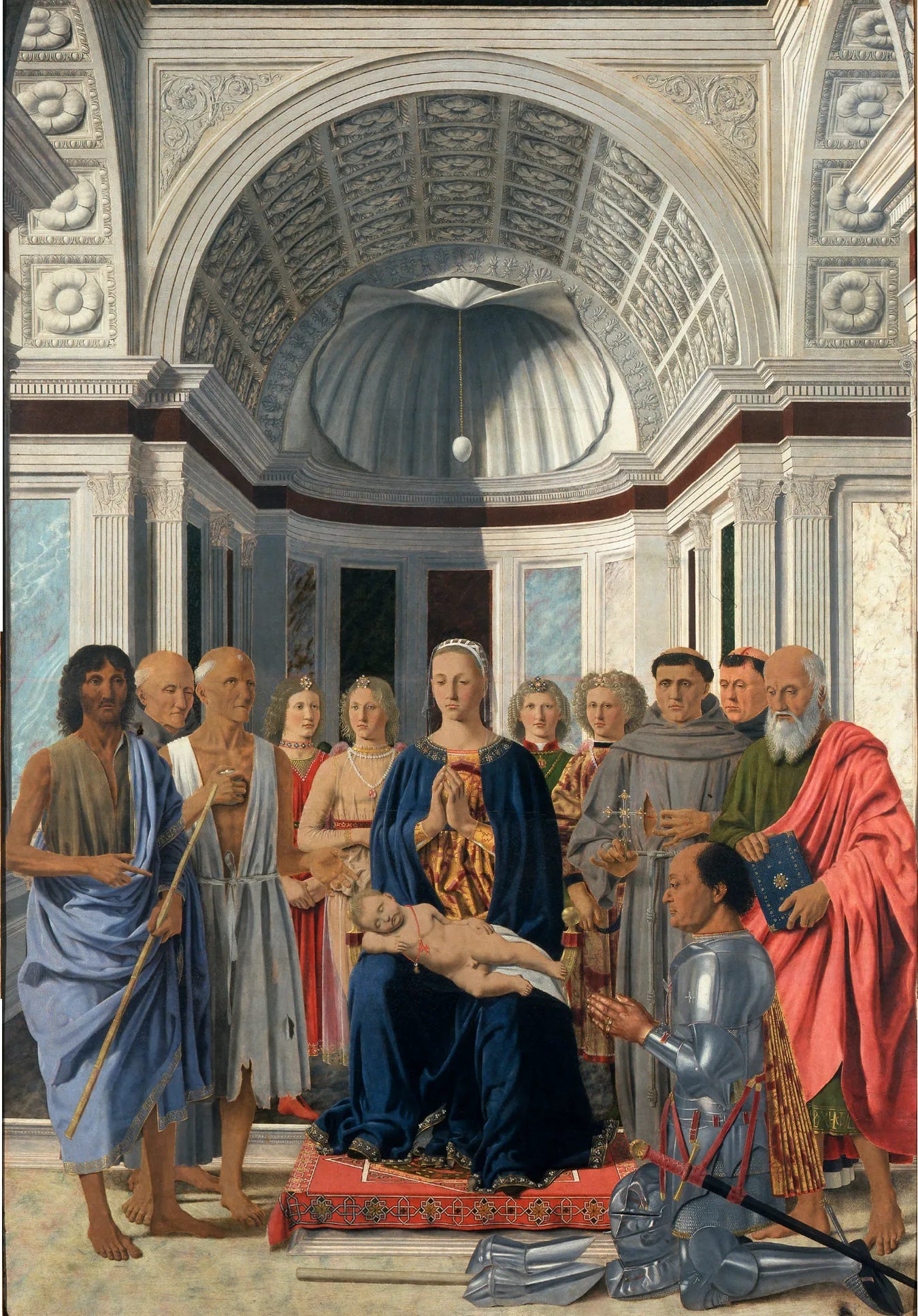
2. Snack With Fried Eggs, Georg Flegel (1580)
This early still life by German painter Georg Flegel presents fried eggs as part of a richly detailed spread. His focus on texture and contrast brings out the eggs’ glossy surfaces, while the embellished tableware surrounding them suggests both indulgence and domestic intimacy. Above all, Snack With Fried Eggs exemplifies the growing fascination with everyday objects in post-medieval art.
3. Still Life with Bread and Eggs, Paul Cézanne (1865)
Cézanne’s eggs capture the quiet poetry of the everyday. He paints them with a studied stillness, their smooth shells set against the rough textures of crusty baguettes, a crumpled serviette and an ornate glass. The composition emphasises balance and restraint, transforming the egg into a meditation on form and light.
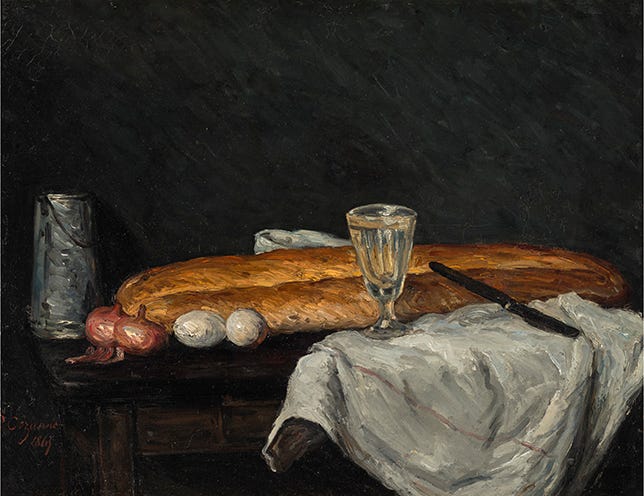
4. The Newborn, Constantin Brâncuși (1920)
In a series of works on the subject, Brâncuși reduces the form of The Newborn to a minimal egg shape. Without figurative detail, the sculpture evokes the open mouth of a crying baby, focusing on the essence of new life. The smooth, egg-like form captures the universal through its simplicity, using the egg as a primal symbol of origin and creation.

5. ‘Geopoliticus’ Child Watching the Birth of the New Man, Salvador Dalí (1943)
In this surrealist classic, a man emerges from a giant egg, watched by a child and mother figure. Created during World War II, the image suggests a new world order struggling to be born amid global upheaval. Dalí was captivated by the egg's contrast between exterior hardness and interior softness, using it as a metaphor for transformation and rebirth. This symbolism recurred throughout his work, even expanding to the design of the Dalí Theatre and Museum in Girona, Spain where massive sculptural eggs line the roof.
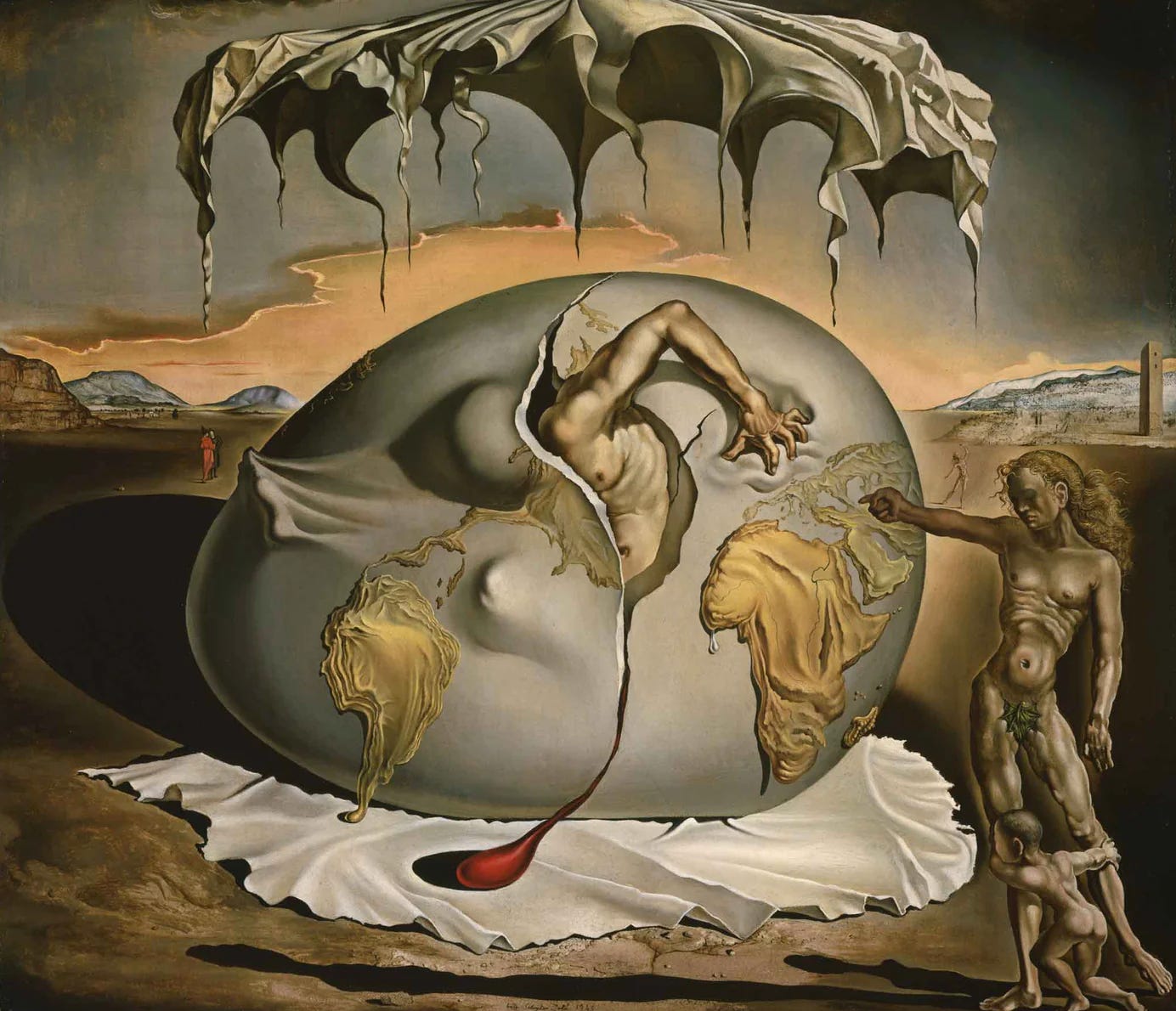
6. The Eggs, Cedric Lockwood Morris (1944)
Morris, a passionate gardener, grew fruit and vegetables for his students at the East Anglian School of Painting and Drawing during the war. He painted the garden’s produce to celebrate nature’s abundance in tough times. In this piece, the eggs are presented as symbols of wonder and fertility, with Morris’s bold use of colour rejecting the muted tones common in British painting at the time.
In 1953, cookery writer Elizabeth David bought the painting, using it as an illustration to accompany her recipes in cookbooks
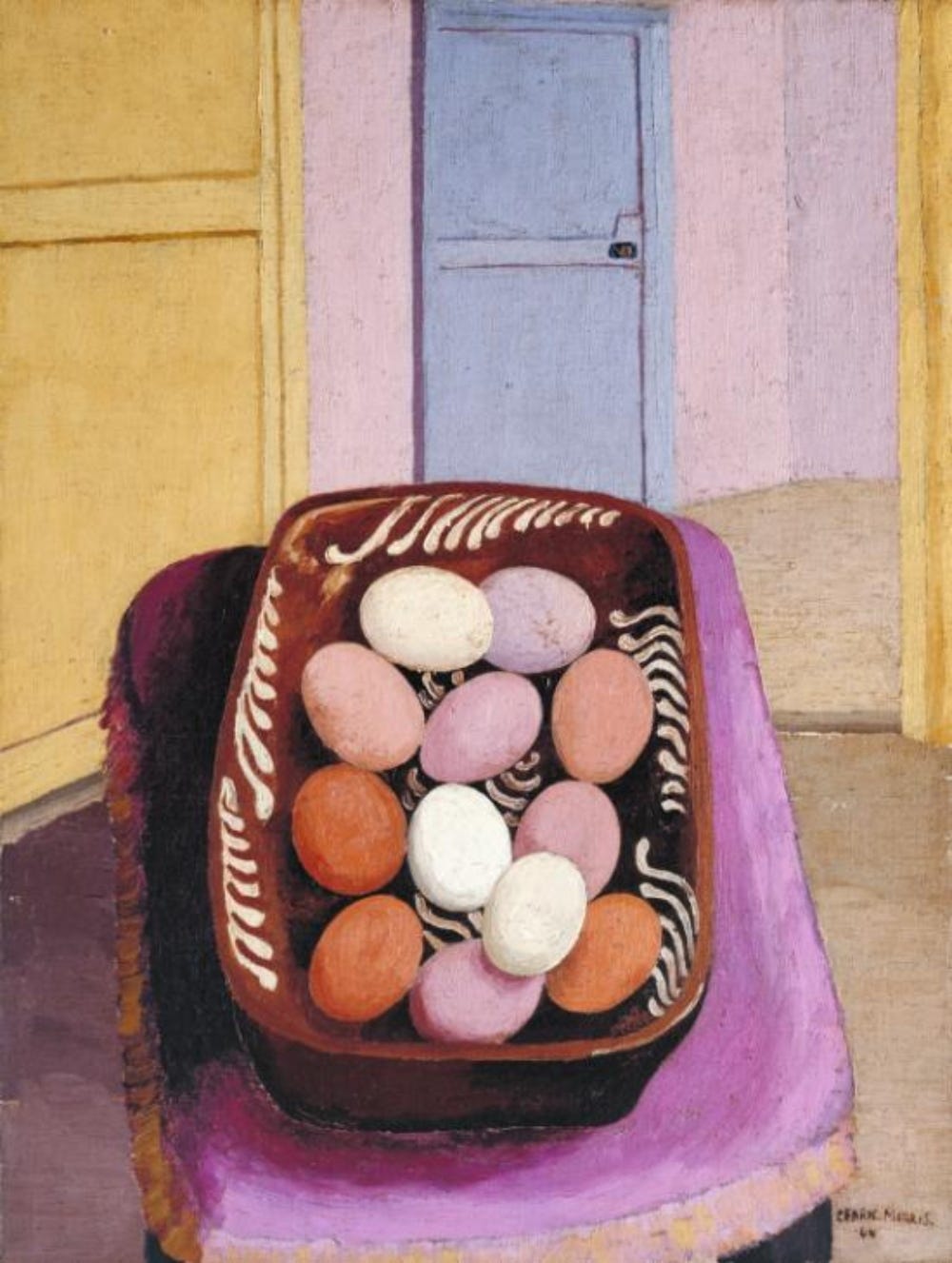
7. Sculpture in the Form of a Fried Egg, Claes Oldenburg (1966–71)
Claes Oldenburg transforms the fried egg into an oversized soft sculpture. Created with his then-wife Patty Mucha the piece exaggerates the familiar to humorous effect. The egg becomes an absurd object that challenges traditional ideas of art and sculpture, playfully inviting a closer look at how we relate to domestic items.
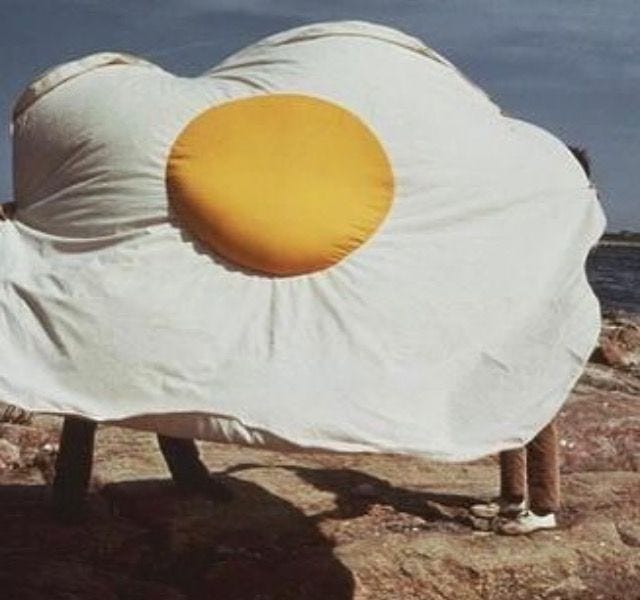
8. Half a Problem, Urs Fischer (2013)
In Fischer’s work, a cross-section of a hard-boiled egg replaces a face in a large photographic portrait. Using a combination of materials, Fischer creates tension between perception and reality, blurring the line between what we expect and what we actually see. Half a Problem challenges our understanding of everyday materials and forms with the egg becoming a symbol of both fragility and absurdity. It shifts between humour and anxiety, turning the familiar into something strange and unsettling.
9. Buffet, Anna Weyant (2020)
In Buffet, Weyant arranges a set of eggs in a way that suggests they are on the verge of tumbling out of the basket. Using her signature blend of classical technique and subtle tension, she transforms the still life into a psychological drama, with each element carrying a shiny, almost cartoonish quality. Beneath the polished surface, her compositions often hint at a quiet menace. The eggs appear both fragile and tense, reflecting themes of control, gender, and vulnerability.
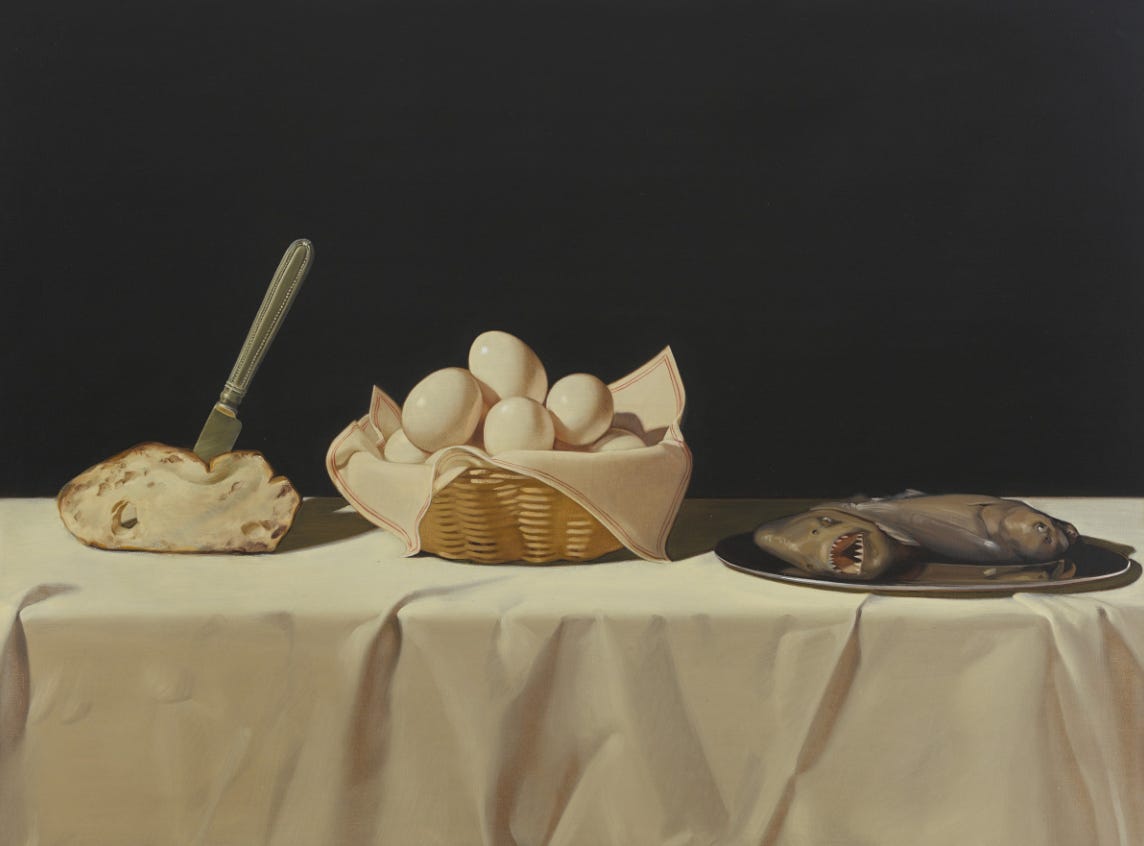
10. 1000 Eggs: For Women, Sarah Lucas (2024)
At the end of 2024, TJ Boulting Gallery hosted the exhibition Un Oeuf is Un Oeuf, featuring a diverse range of artists whose works centred around the egg.
The centrepiece of the show was a performance by Sarah Lucas, an artist who has long incorporated eggs into her practice. The piece involved hundreds of women, those who identify as women and men dressed as women, throwing 1,000 eggs against a gallery wall to create a large abstract painting. This act alluded to the traditional medium of egg tempera while also symbolising women’s fertility and the throwing of eggs as a form of protest.
Whether placed in quiet still lifes or thrown in acts of protest, the egg continues to offer artists a powerful visual and conceptual tool. Its familiar form holds layers of meaning, from birth and nourishment to absurdity and resistance. Its place in art history remains surprisingly vital.
In the end, the egg speaks not only to life’s beginnings but to the many ways artists continue to make sense of the world.

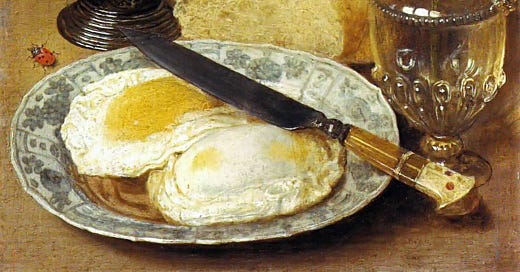



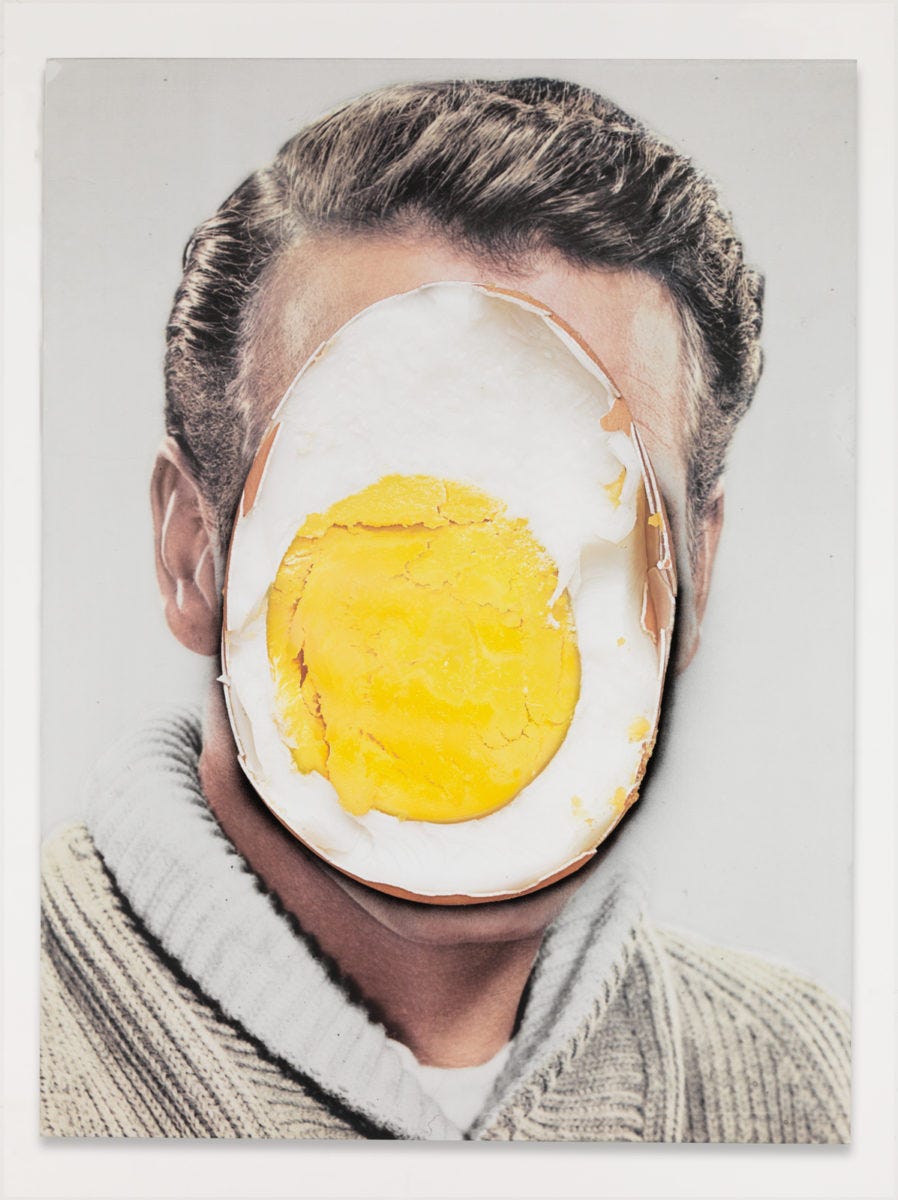
This is actually so cool! Loved the compilation and the explanation for each piece. Well done!
three words, one artist missing. Ciarra K Walters